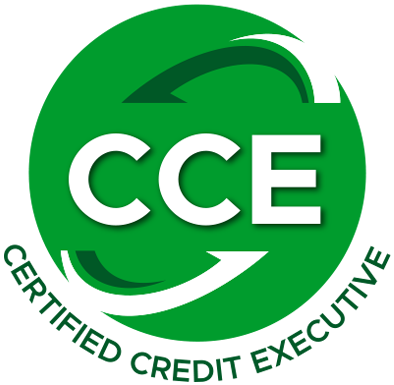Certified Credit Executive® (CCE®)
Exam Study Outline
NIC Links
Recommended Texts
Depending on an applicant’s proficiency, some or all of the following publications are recommended:
- Credit Management: Principles and Practices, 4th edition by Dr. Charles Gahala, CCE
- Understanding Financial Statements by Lyn M. Fraser
- Manual of Credit and Commercial Laws by NACM
- Antitrust, Restraint of Trade, and Unfair Competition: Myth Vs. Reality by Wanda Borges, Esq.
All of these publications are available for purchase through the NACM Bookstore.

CCE Exam Format
The length and scope of each CCE exam may vary. Traditionally, the exam is comprised of two sections: short answer/essay questions covering a variety of credit, legal and management issues and a case study. The exam measures a candidate’s ability to apply concepts to situations or explain how they relate to the field of business credit. The case study will require a candidate to analyze a case company and apply your findings to specific questions.
Candidates may take up to four hours to complete the exam. Many candidates have difficulty with the time constraint. We suggest you take questions from the Charles Gahala text listed herein, and attempt to answer the questions in one or two well-developed paragraphs. To get a feel for the testing environment, time yourself. Gauge your progress after fifteen minutes. If you are unable to thoroughly discuss a topic in a timed situation, focusing on the topic’s primary issues, you may wish to review the topic in greater detail or continue with these timed exercises.
During the exam if you are uncertain about a question, move on and come back to it later or provide as much information as you know since partial credit is given. If the exam instructions state that a fully developed answer is composed of two or three paragraphs, do not over or under respond to the question. Providing a two-page answer where two paragraphs will suffice only eats away at your time. Also, keep in mind that the opposite is true. If you are familiar with a subject, writing a two sentence response is clearly too brief based on the instructions.
Please be aware that the essay portion of the exam and the case study section are each worth approximately fifty points. No one section is more important than the other. The exam you take will note the precise value of each question. Texts and notes may not be used during the exam. Hand-held calculators may be used. Candidates must earn a final score of 70% to pass this examination. And finally, please keep in mind that every test-taker is different. You are the best judge of your study habits and testing strengths and weaknesses.
Credit Management: Principles and Practices
by Dr. Charles Gahala
Understanding Financial Statements
by Lyn M. Fraser
Manual of Credit and Commercial Laws
by NACM
-
Vol. I, Chapter 5The Formation, Performance and Enforcement of Contracts
-
Vol. 1, Chapter 6Antitrust and Trade Regulation for Credit Groups and Grantors
-
Vol. 1, Chapter 8The Sarbanes-Oxley Act: Compliance Issues and Regulations
-
Vol. II, Chapter 3Uniform Commercial Code: An Overview
-
Vol. II, Chapter 4Negotiable Instruments: Notes, Checks, and Drafts
-
Vol. II, Chapter 6Secured Transactions: A Step-by-Step Explanation
-
Vol. II, Chapter 7Bad Check Laws
-
Vol. II, Chapter 10Consumer Protection Legislation
-
Vol. IV, Chapter 1Reclamation, Stoppage in Transit and Adequate Assurance Rights, Administrative Claim in Favor of Goods Suppliers, and other Return of Goods Remedies
-
Vol. IV, Chapter 2A Creditor’s Guide to the Bankruptcy Process
-
Vol. IV, Chapter 3Alternatives to Forcing a Financially Distressed Debtor into Bankruptcy